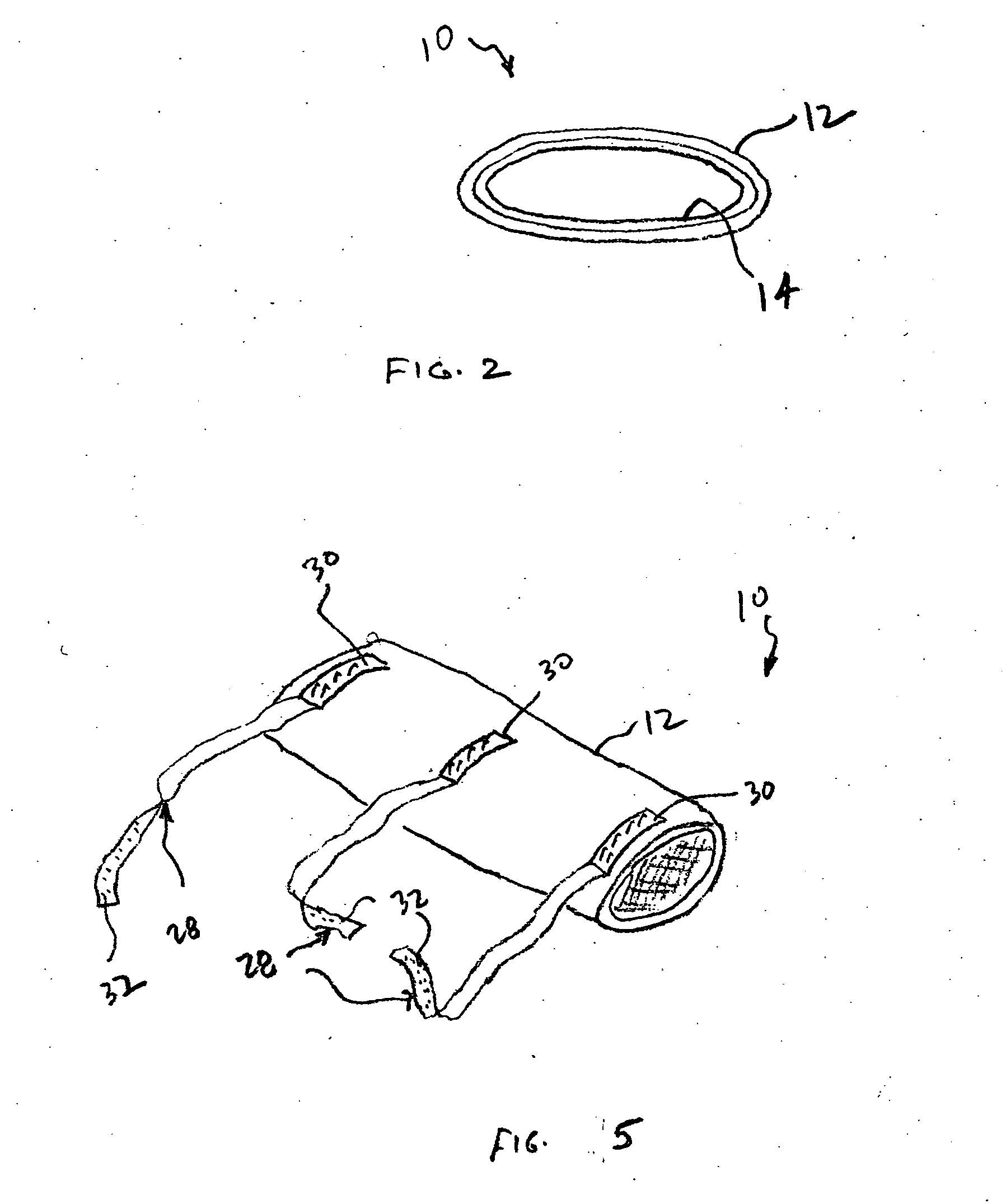Device for the delivery of blood clotting materials to a wound site
a technology for wounds and materials, applied in medical science, non-surgical orthopedic devices, dressings, etc., can solve the problems of insufficient immediate availability of equipment and trained personnel, insufficient stopping of blood flow, and excessive bleeding, etc., to achieve convenient clotting of blood, convenient clotting, and convenient removal
- Summary
- Abstract
- Description
- Claims
- Application Information
AI Technical Summary
Benefits of technology
Problems solved by technology
Method used
Image
Examples
Embodiment Construction
[0025] Disclosed herein are devices and methods for delivering materials to wounds to promote the clotting of blood and the dressing of the wounds. The devices can be worn by victims to maintain contact between the devices and bleeding wound sites of the victim such that materials incorporated into the devices are contacted by the tissue of the wound to minimize or stop blood flow by absorbing at least portions of the liquid phases of the blood, thereby promoting clotting. The devices encompass sleeves, stockings, or mittens, each comprising a flexible tubular shell having a blood clotting agent disposed on at least a portion of an inner surface thereof. The devices also encompass caps that can be worn on the head to contact wounds on the scalp, ears, or nape of the neck, the caps having blood clotting agent disposed on at least a portion of an inner surface thereof. The devices also encompass bandages that can be disposed directly on wounds. In any device, the blood clotting agent ...
PUM
 Login to View More
Login to View More Abstract
Description
Claims
Application Information
 Login to View More
Login to View More - R&D
- Intellectual Property
- Life Sciences
- Materials
- Tech Scout
- Unparalleled Data Quality
- Higher Quality Content
- 60% Fewer Hallucinations
Browse by: Latest US Patents, China's latest patents, Technical Efficacy Thesaurus, Application Domain, Technology Topic, Popular Technical Reports.
© 2025 PatSnap. All rights reserved.Legal|Privacy policy|Modern Slavery Act Transparency Statement|Sitemap|About US| Contact US: help@patsnap.com



